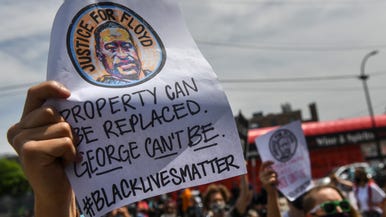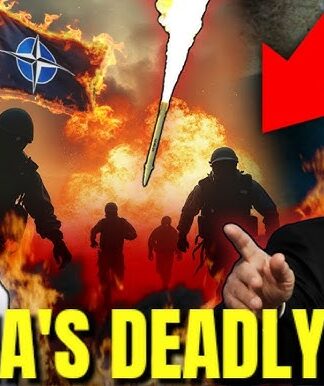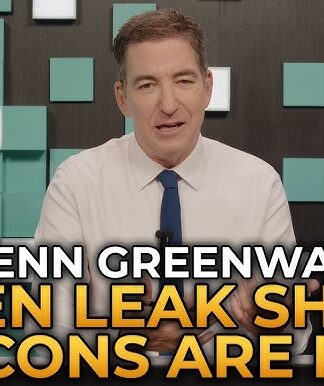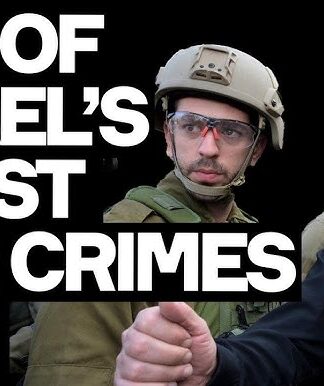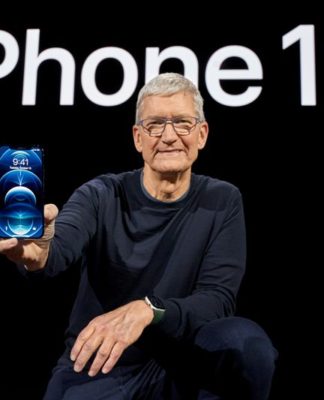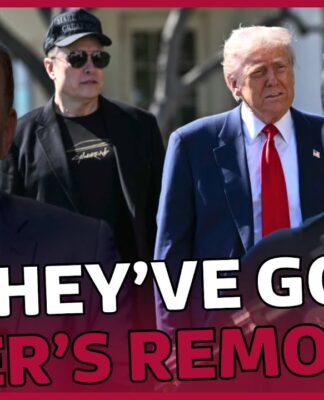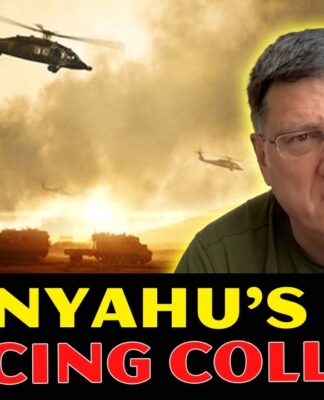Activists broke into the third precinct late Thursday while chanting “I can’t breathe.”
Solomon Gustavo
Carol McKinley
Matt Taylor
MINNEAPOLIS—Protesters demanding action over the death of 46-year-old George Floyd took over the Minneapolis Police Department’s Third Precinct late Thursday and set the building ablaze.
Video from the scene showed demonstrators chanting “I can’t breathe” and cheering as the building was breached, with alarms blaring in the background.
“This is 400 years of anger,” one protester, Justin Galbraith, told The Daily Beast as the flames sent smoke up into the sky.
Others in the crowd echoed that sentiment.
“There are so many innocent lives lost by the police. We protest peacefully and there is no accountability. So this happens,” demonstrator Cecilia Zwak said.
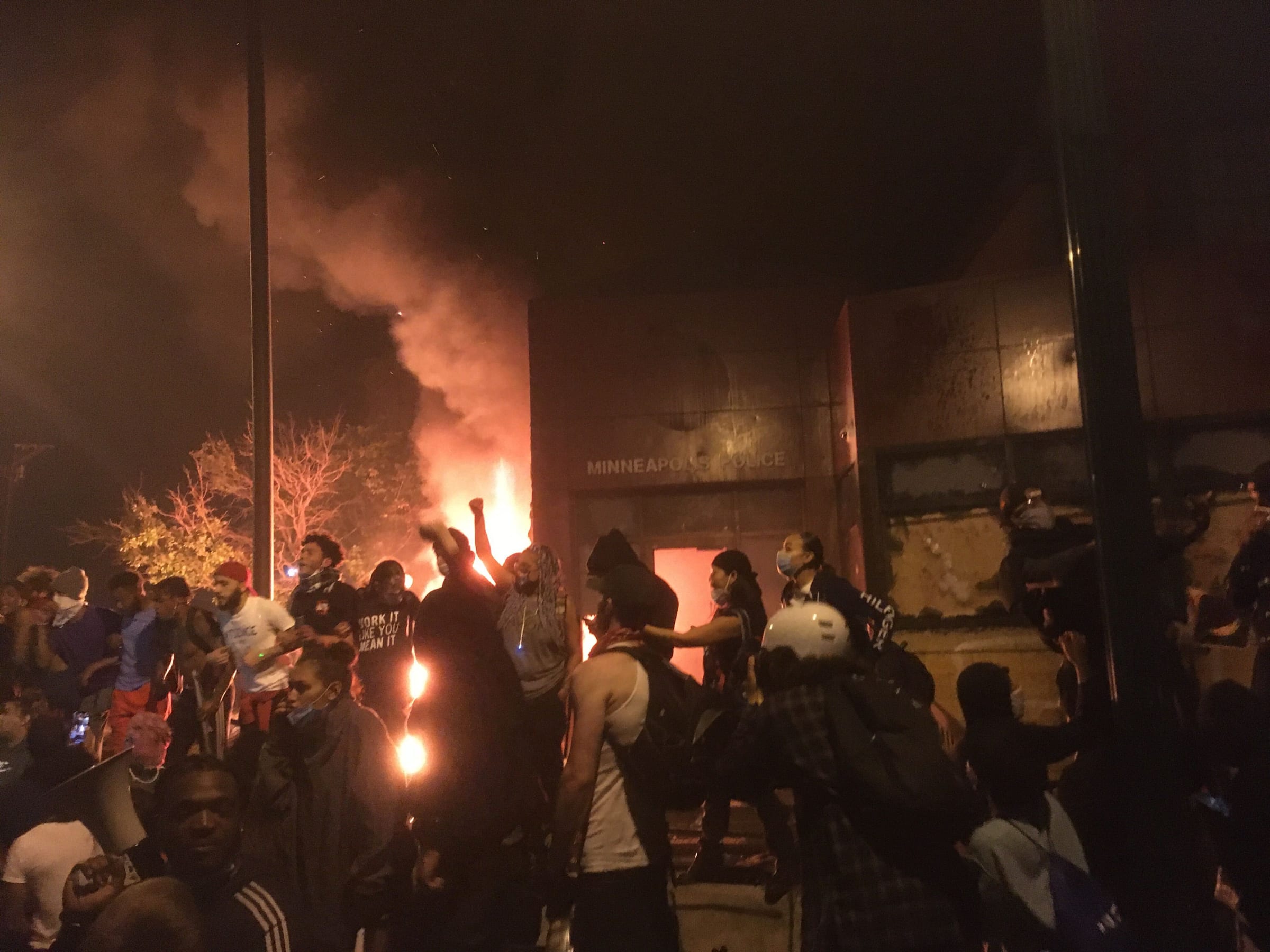
Protesters overran Minneapolis’ 3rd Precinct headquarters and set it on fire.
Solomon Gustavo
The takeover appeared to mark a turning point in the protests that kicked into a new gear nationwide Thursday, as a bumbling press conference by confused prosecutors risked inviting further rage and violence.
From New York City to Denver to St. Paul, activists massed in the face of a pandemic to call out what they saw as the wanton killing of Floyd, an unarmed black man, by a Minneapolis cop on Monday. Dozens of arrests were reported by late Thursday afternoon in Manhattan’s Union Square, at least one protester in Minneapolis was said to have been stabbed, and there was horrifying video footage of a car slamming into a protester in Denver—where gunfire was reported at the state capitol.
At one point in Minneapolis early Thursday evening, a brawl broke out between members of a small group of protesters. Anthony Thornton, 32, of North Minneapolis, said he chased down the alleged assailant.
“I saw him in the fight across the street and saw him run away. People were yelling that he stabbed someone,” Thornton told The Daily Beast, while brandishing a pistol. “I jumped in my Jeep and chased him across the parking lot, pointed my gun at him, and told him to stop. He stopped and walked here with me peacefully.”
“I’ve been here for three days. I’m a protester,” Thornton added. “Things are not supposed to go down like this. I’m just making sure things stop.”
The question—as cops continued to use teargas, protesters threw eggs at cop cars, and vandalism and looting reportedly percolated in the Twin Cities—was how authorities would respond to escalating chaos in the hours ahead. Minnesota Gov. Tim Walz officially activated the National Guard earlier in the day, raising the prospect of a military-style occupation of swaths of a city with a long history of police violence.
Meanwhile, a longtime friend of George Floyd, former NBA star Stephen Jackson, appealed to protesters to stand up for Floyd the “right way.”
In an interview with MSNBC, Jackson said his slain friend “wouldn’t want it to be this way.”
“He wouldn’t have wanted people to be tearing stuff down, and people getting hurt,” he said. “He wouldn’t want businesses and people to suffer.”
The more immediate concern for activists, however, may have been county and federal prosecutors calling a press conference Thursday afternoon to announce nothing—except, well, that they thought the case was complicated.
“There is other evidence that does not support a criminal charge,” Hennepin County Attorney Mike Freeman said of calls to bring charges against the white police officer in Floyd’s death. The officer was caught on video kneeling on Floyd’s neck for at least seven minutes while Floyd pleaded and warned that he couldn’t breathe. He was without a pulse when placed in an ambulance a short time later. U.S. Attorney Erica MacDonald went so far as to apologize for summoning the press for no reason, while Freeman said he wanted to avoid prematurely filing aggressive charges only to see them go down at trial.
He specifically cited the failed prosecution of police over the death of Freddie Gray in Baltimore in 2015.
Demonstrators who faced down teargas projectiles in Minneapolis on Thursday were less concerned with legal precedents and more determined to have the case seen for the outrage that they say it is.
RELATED IN U.S. NEWS
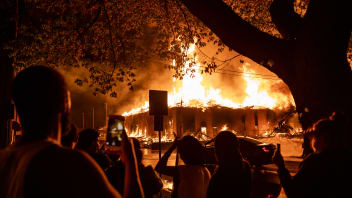
‘Burn It Down’: Fires Rage as Minneapolis Chaos Turns Deadly
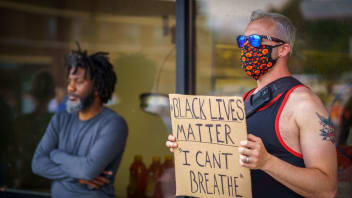
Protests Over George Floyd’s Death Spread Across the Country
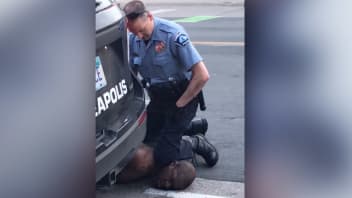
‘The Tear Gas Is All Over Me’: Minneapolis Rages at Police
“George Floyd was killed over nothing. It was a modern day lynching. We have no voice,” demonstrator Josh Estes told The Daily Beast.
“I feel it’s necessary. Otherwise, nothing is going to change,” Summer Bond, 22, told The Daily Beast of sprawling destruction that included a police vehicle. “I do feel bad for the businesses. But the squad car? The station? Not at all.”
In Denver, a person with a scarf around his face took a bat to two official state vehicles, and rocks were hurled at first-floor building. Police there also used teargas on demonstrators around 8:30 p.m.
Reports of gunfire sent the city’s State Capitol building into lockdown a few hours earlier, according to the Colorado State Patrol. No injuries were immediately reported, but protests continued apace.
“This only makes me more resolved. We have more work to do,” Leslie Herod, a state legislator, told The Daily Beast while sheltering in place.
Minneapolis Man: Cop Who Kneeled on George Floyd ‘Tried to Kill Me’ in 2008
In 2008, Derek Chauvin barged into Ira Toles’ home while responding to a domestic-violence call and shot him at close range, leaving him with a permanent hole in his stomach.
Ira Latrell Toles didn’t immediately recognize Minneapolis cop Derek Chauvin in the now-viral video of him holding his knee on George Floyd’s neck as the handcuffed black man repeatedly told him he couldn’t breathe.
But when news outlets identified the officers involved, Toles, 33, realized the man responsible for Floyd’s death was the same police officer who barged into his home and beat him up in the bathroom before shooting him in the stomach 12 years earlier while responding to a domestic violence call.
“The officer that killed that guy might be the one that shot me,” Toles texted his sister on Tuesday night, according to messages shared with The Daily Beast. “They said his last name and I think it was him.”
“It’s him,” his sister instantly replied.
On Tuesday, Chauvin was one of four officers fired for his involvement in Floyd’s death, which has sparked protests across the country and calls for a federal hate-crime investigation. Local outlets reported that Chauvin was the officer who knelt on Floyd’s neck for several minutes—as the 46-year-old pleaded, “I’m about to die.” Floyd had no pulse when he was finally put into an ambulance.
-
‘Burn It Down’: Fires Rage as Minneapolis Chaos Turns Deadly
BOILING POINTSolomon Gustavo,
Kelly Weill
Minneapolis Mayor Jacob Frey on Wednesday called for Hennepin County Attorney Mike Freeman to arrest and charge Chauvin with Floyd’s death. “Why is the man who killed George Floyd not in jail? If you had done it, or I had done it, we would be behind bars right now,” Frey said in a news conference.
Toles believes that Floyd’s horrific death could have been prevented if Chauvin was properly punished for his violent arrest in May 2008. He said that while he pleaded guilty to a misdemeanor charge—and still suffers pain from the bullet hole in his lower stomach—Chauvin continued his career at the Minneapolis Police Department with nothing more than a slap on the wrist.
“If he was reprimanded when he shot me, George Floyd would still be alive,” the IT professional said.
Authorities said that just before 2 a.m on May 24, 2008, officers responded to a domestic violence call at an apartment complex on Columbus Ave South. The 911 operator could hear a woman yelling for somebody to stop hitting her, local media reported at the time.
Toles, who was then 21, admits that the mother of his child called the cops on him that night, but he was surprised when several officers showed up without announcing themselves.
“When I saw that he breached the front door, I ran in the bathroom,” Toles told The Daily Beast. “Then [Chauvin] starts kicking in that door. I was in the bathroom with a cigarette and no lighter.”
The 33-year-old said that Chauvin broke into the bathroom and started to hit him without warning. Toles said he returned blows to the officer because “my natural reaction to someone hitting me is to stop them from hitting me.”
RELATED IN U.S. NEWS

‘The Tear Gas Is All Over Me’: Minneapolis Rages at Police

‘Burn It Down’: Fires Rage as Minneapolis Chaos Turns Deadly
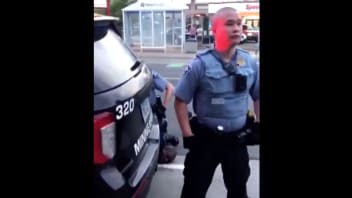
Cop in George Floyd Death Beat Up Cuffed Black Man in 2014
“All I could do is assume it was the police because they didn’t announce themselves or ever give me a command,” he said. “I didn’t know what to think when he started hitting me. I swear he was hitting me with the gun.”
According to local news reports, Chauvin shot and wounded Toles after he allegedly reached for an officer’s gun. Toles said he doesn’t remember being shot—just “being walked through the apartment until I collapsed in the main entrance where I was left to bleed until the paramedics came.”
“I remember my baby mother screaming and crying also,” he added.
Toles was taken to Hennepin County Medical Center, where he said he stayed for about three days. There, he learned Chauvin had shot him at such close range that the bullet went through his groin and came out his left butt cheek before hitting the bathroom wall. The wound, he said, left a hole that “never really closed” and is so large he can still stick a finger inside.
Once he was released from the hospital, Toles said he was taken directly to court, where he was charged with two felony counts of obstructing legal process or arrest and a misdemeanor count of domestic assault.
“I would assume my reaction would be to try to stop him from hitting me. If his first reaction was hitting me in the face that means I can’t see and I’m too disoriented to first locate his gun and then try to take it from him and for what?” Toles said. “To turn a misdemeanor disorderly situation into a felony situation that could have resulted in me dying? He tried to kill me in that bathroom.”
Toles said he only spent a day or two in jail—where he was denied pain pills—for the charges before he was released. Three months later, he said he pleaded guilty to a misdemeanor charge as part of a deal.
Chauvin and the other officers involved were put on paid administrative leave pending an investigation into the shooting—a standard procedure for the Minneapolis Police Department—but were later placed back into the field.
“I knew he would do something again,” Toles said. “I wish we had smartphones back then.”
The Minneapolis Police Department did not immediately respond to The Daily Beast’s request for comment.
Chauvin, 44, is one of four officers who responded to a suspected “forgery in process” on Monday night—along with Thomas Lane, J Alexander Kueng, and Tou Thao.
In the gut-wrenching, 10-minute video recorded by a bystander, Chauvin is seen pressing his knee on Floyd’s neck while Thao stands guard, trying to keep upset bystanders at bay.
“Please, please, please, I can’t breathe. Please, man,” Floyd says in the footage that does not show the beginning of the arrest. “I’m about to die,” he says.
A Minneapolis Fire Department report said Floyd did not have a pulse when he was loaded into an ambulance. He was pronounced dead at a nearby hospital shortly after in what police described as a “medical incident.”
“We are looking and demanding that these officers be arrested and charged with the murder of George Floyd,” Ben Crump, a civil rights attorney representing the 46-year-old’s family, told The Daily Beast on Thursday. “My hope is that there will be effective and courageous leadership that will speak to the value of George Floyd’s life as an example to the world that black lives matter. It’s time for a change in Minneapolis.”
Chauvin, who joined the force in 2001, has also been involved in several other police-involved shootings throughout his career. According to Communities United Against Police Brutality, 10 complaints have been filed against the now-former police officer—but Chauvin only ever received two verbal reprimands.
In 2006, Chauvin was involved in the fatal shooting of 42-year-old Wayne Reyes, who allegedly stabbed two people before reportedly turning a gun on police. Chauvin was among six officers to respond to the stabbing. A year prior, Chauvin and another officer were also chasing a car that then hit and killed three people, according to Communities United Against Police Brutality.
In 2011, the officer was also one of five officers placed on a standard three-day leave after the non-fatal shooting of a Native American man. The officers returned to work after the department determined that they had acted “appropriately.”
The city’s Civilian Review Authority, which lists complaints prior to September 2012, shows five more complaints against Chauvin, which were closed without discipline. A prisoner at a Minnesota correctional facility sued Chauvin and seven other officers for “alleged violations of his federal constitutional rights” in 2006, although the case was dismissed and the details were not clear.
Toles said that while he has not protested himself, he believes this horrific incident is a watershed moment for the Minneapolis Police Department—an agency that he says has become the butt of a joke in the black community.
“We joke about it in the black community but we know that a white person calling the cops on us is gonna go in their favor,” he said.
The 33-year-old added that while he believes Floyd’s death will finally bring change and reform that is necessary for Minneapolis, it’s outraged residents who will ensure that justice is finally seen. He added that while he never filed a complaint in 2008, he is now looking to sue the Minneapolis Police Department for the violent incident.
“We’ve all reached our tipping point. Water boils at 212 degrees,” he said. “We’re at 600.”










